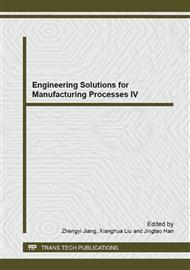p.467
p.474
p.479
p.483
p.488
p.493
p.497
p.501
p.507
Analysis and Simulation on Drive Characteristic of High-Strength Water Hydraulic Artificial Muscle
Abstract:
Driving processes and characteristics are different between the water hydraulic artificial muscle and pneumatic artificial muscle due to the difference of work media employed in muscles. An appropriative hydraulic circuit was designed to control the pressure of the water hydraulic artificial muscle and the performance of this system was analyzed. An AMESim model of the control system was built and the dynamic characteristics are analyzed with various parameters of the hydraulic circuit and various loads by simulation. The results show that the performance of the water hydraulic control valve should agree with the dimension of the water hydraulic artificial muscle. The rated flow rate of the water hydraulic valves can be selected increasingly while the load mass is low. Meanwhile, the overshoot is generated and enlarged along with the increases of the flow rate and load mass. These contribute to the improvements of designs and researches on control systems of water hydraulic artificial muscles.
Info:
Periodical:
Pages:
488-492
Citation:
Online since:
February 2014
Authors:
Price:
Сopyright:
© 2014 Trans Tech Publications Ltd. All Rights Reserved
Share:
Citation:


